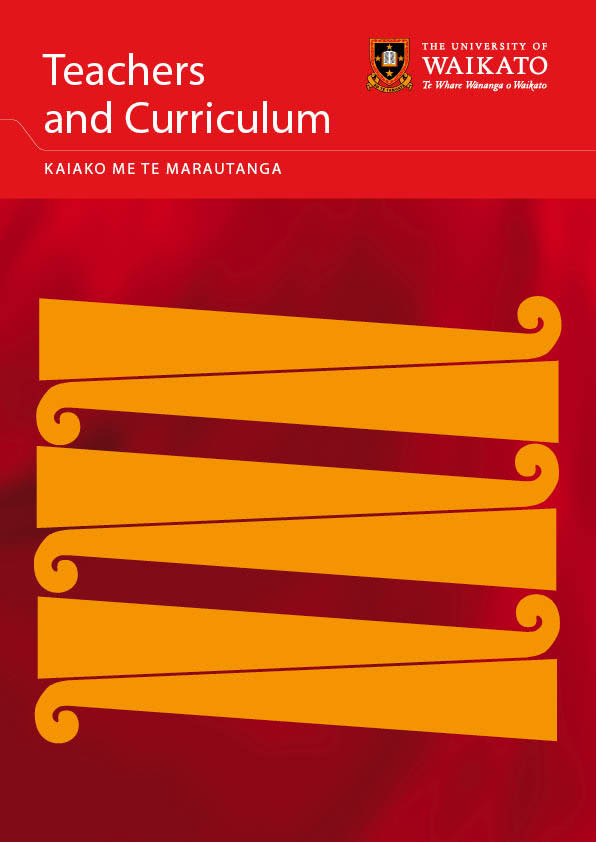Abstract
N/AReferences
Bishop, R., O’Sullivan, D., & Berryman, M. (2010). Scaling up education reform: Addressing the politics of disparity. Wellington, New Zealand: NZCER Press.
Bourdieu, P., & Passerson, J. (1997). Reproduction in education, society and culture. The School Review, 86(1), 144–147.
Coleman, C. (2011). “You can try sound brainy”: The use of process drama to engage Pasifika boys. Set: Research Information for Teachers, 1, 23–30.
Cooper, M., & Hedges, H. (2014). Beyond participation: What we learned from Hunter about collaboration with Pasifika children and families. Contemporary Issues in Early Childhood, 15(2), 165–175. doi:10.2304/ciec.2014.15.2.165
Education Review Office. (2012). Improving education outcomes for Pacific learners. Wellington: New Zealand: Education Counts. Retrieved from https://www.educationcounts.govt.nz/statistics/schooling/national-standards/National_Standards
Eisner, E. W. (1998). Does experience in the arts boost academic achievement? Journal of Art and Design Education 17(1), 51–60. doi:10.1111/1468-5949.00105
Fletcher, J., Parkhill, F., Fa’afoi, A., & Taleni, L. T. (2006). Pasifika students’ perceptions of barriers and support to reading and writing achievement in New Zealand schools. New Zealand Journal of Educational Studies, 41(2), 163–182.
Ferguson, P. B., Gorinski, R., Wendt Samu, T., & Mara, D. (2008). Literature review on the experiences of Pasifika leaners in the classroom. Retrieved from http://www.educationcounts.govt.nz/publications/pasifika/27772/27574
Gullatt, D. E., (2007). Research links the arts with student academic gains. The Educational Forum, 71(3), 211–220. doi:10.1080/00131720709335006
Langer, S. K. (1966). The cultural importance of the arts. Journal of Aesthetic Education, 1(1), 5–12.
Mackley-Crump, J., (2011). Malaga—The journey: Performing arts as a motivational tool for Pasifika students in Aotearoa New Zealand. The Asia Pacific Journal of Anthropology, 12(3), 255–273. doi:10.1080/14442213.2011.566573
Milne, B. A. (2009). Colouring the white spaces. Cultural identity and learning in school (Doctoral Thesis). University of Waikato, Hamilton, New Zealand. Retrieved from http://researchcommons.waikato.ac.nz/handle/10289/7868
Ministry of Education. (2013). Pasifika Education plan 2013–2017. Retrieved from http://www.minedu.govt.nz/NZEducation/Educationpolocies/PasifikaEducation/-media/MinEdu/Files/EducationSectors/PasifikaEducation/PEPfoldup12Fe
Parkhill, F., Fletcher, J., & Fa’afoi, A. (2005). What makes for success? Current literacy practices and the impact of family and community on Pasifika children’s literacy learning. New Zealand Journal of Educational Studies, 40(1–2), 61–84.
Siope, S. A. M. (2010). Children of the migrant dreamers: Comparing the experiences of Pasifika students in two secondary schools attempting to be culturally responsive to mine from a generation ago (Masters thesis). University of Waikato, Hamilton, New Zealand. Retrieved from http://researchcommons.waikato.ac.nz/handle/10289/5003
Tiatia, J. (1998). Caught between cultures. A New Zealand-born Pacific Island perspective. Auckland, New Zealand: Christian Research Association.
Wall, G. (2014). Māui whakakau, kura whakakau – Modern learning environments to support priority learners. Wellington, New Zealand: Ministry of Education. Retrieved from http://www.education.govt.nz/assets/Documents/Primary-Secondary/Property/School-property-design/Flexible-learning-spaces/Maui-Whakakau-TLE-factsheet.pdf

This work is licensed under a Creative Commons Attribution-NonCommercial-ShareAlike 4.0 International License.

